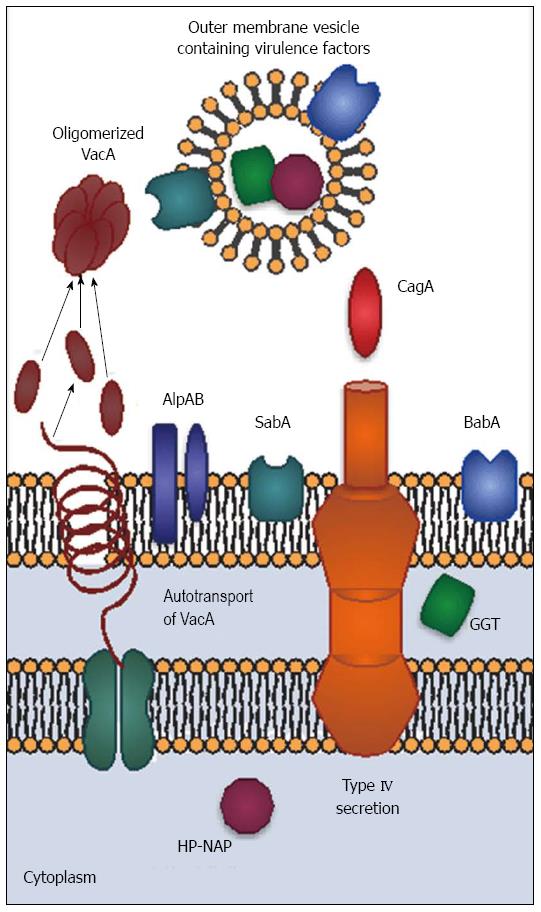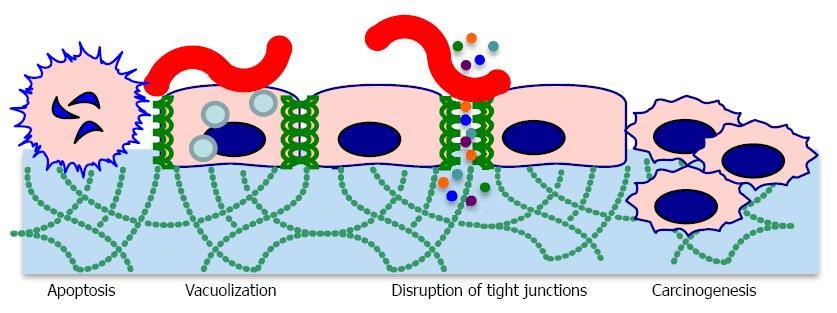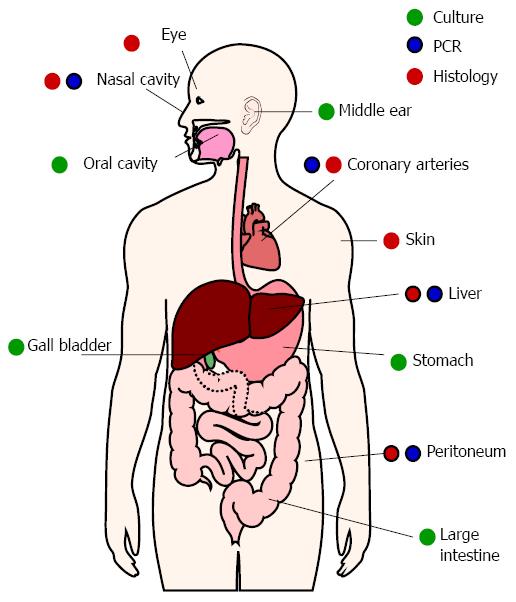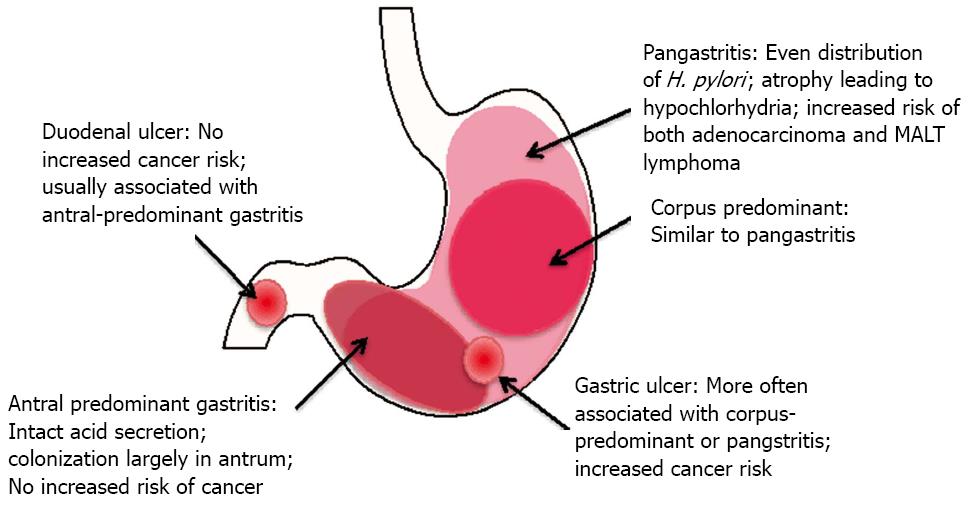Copyright
©2014 Baishideng Publishing Group Inc.
World J Gastroenterol. Sep 28, 2014; 20(36): 12781-12808
Published online Sep 28, 2014. doi: 10.3748/wjg.v20.i36.12781
Published online Sep 28, 2014. doi: 10.3748/wjg.v20.i36.12781
Figure 1 Major virulence factors of Helicobacter pylori.
Type IV secretion system-mediated transport of CagA and autotransport of VacA monomers are depicted. Outer membrane vesicles can contain membrane-associated and soluble virulence factors. Representative outer membrane adhesins are shown. GGT: γ-Glutamyl transpeptidase.
Figure 2 Effects of Helicobacter pylori on host cells.
Helicobacter pylori virulence factors can lead to apoptosis, vacuolization, disruption of barrier function (leading to nutrient leakage), de-differentiation, and carcinogenesis.
Figure 3 Detection of Helicobacter pylori.
Evidence of Helicobacter pylori (H. pylori) has been found in numerous sites throughout the body. Colored dots indicate the method of detection used. In cases where H. pylori has been directly cultured, other detection methods are not listed.
Figure 4 Typical Helicobacter pylori-associated pathology.
Gastritis may be antral-predominant, corpus-predominant, or diffuse. The risk of developing adenocarcinoma or MALT lymphoma varies depending on the type of pathology present.
-
Citation: Testerman TL, Morris J. Beyond the stomach: An updated view of
Helicobacter pylori pathogenesis, diagnosis, and treatment. World J Gastroenterol 2014; 20(36): 12781-12808 - URL: https://www.wjgnet.com/1007-9327/full/v20/i36/12781.htm
- DOI: https://dx.doi.org/10.3748/wjg.v20.i36.12781












